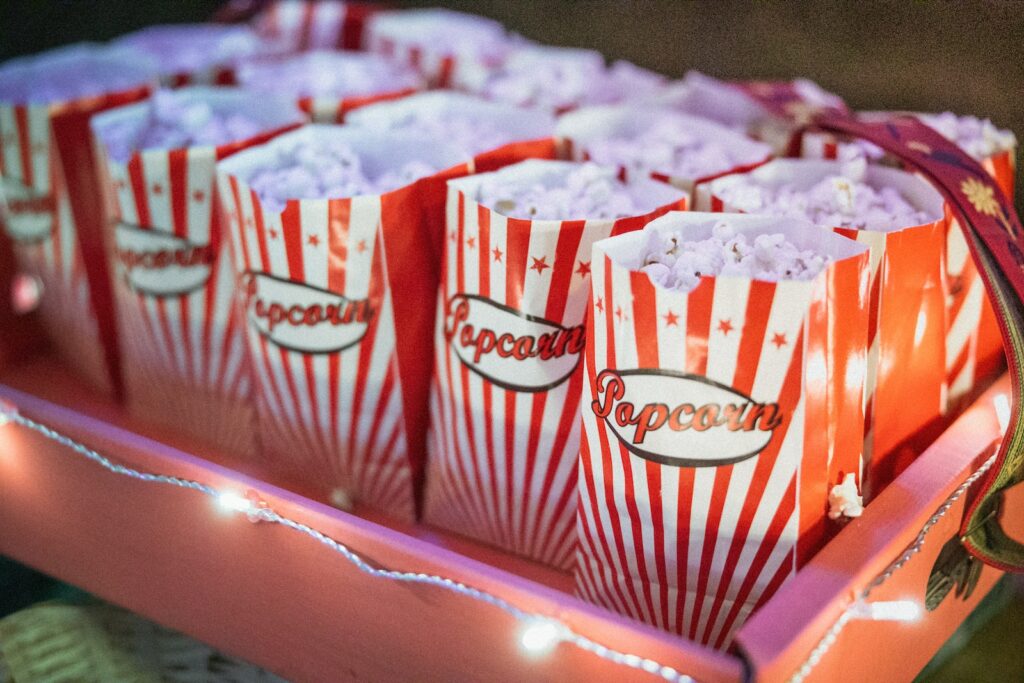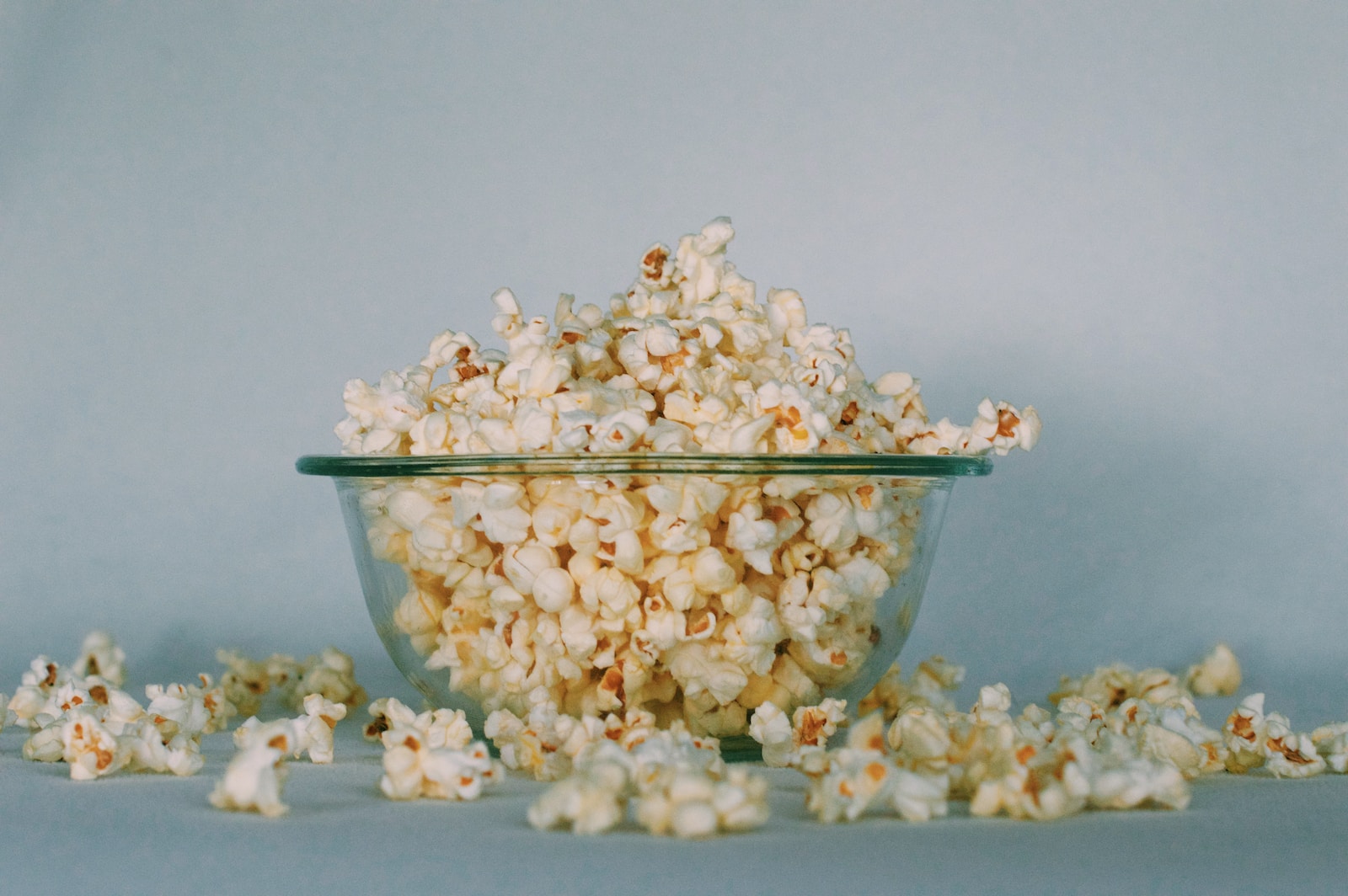Welcome to “Popcorn Popping: Photographing in Action,” where we embark on an exciting journey into the world of high-speed popcorn popping photography. Get ready to capture the explosive moments and unleash your creativity with expert tips on settings, composition, and timing. Join us as we explore the fascinating realm of food photography and learn how to capture the perfect popcorn pop in stunning detail.
Table of Contents
- Understanding High-Speed Photography
- A Relevant Case Study: Capturing Popcorn Popping in High-Speed Photography
- Frequently Asked Questions
- 1. What equipment do I need for popcorn popping photography?
- 2. What camera settings should I use?
- 3. How should I compose my popcorn popping shots?
- 4. What lighting techniques work best for popcorn popping photography?
- 5. How do I time my shots perfectly?
- 6. Any tips for capturing popcorn popping in action?
- 7. Can you recommend any additional resources for popcorn popping photography?
- Wrap Up
Understanding High-Speed Photography
High-speed photography is all about freezing motion and capturing the split-second moments that our eyes often miss. When it comes to popcorn popping, being able to immortalize that burst of energy in your photographs is a true art form. Whether you’re a professional photographer or an aspiring enthusiast, these expert tips and techniques will help you elevate your popcorn popping photography to new heights.
Setting up Your Shot
The key to capturing the perfect popcorn pop lies in careful planning and preparation. Before you start shooting, make sure you have the right equipment and a popcorn popping setup that allows for maximum control over your shots. Consider using a high-speed camera with a fast shutter speed, a tripod for stability, and lighting that highlights the action. Experiment with different angles and compositions to bring out the drama and excitement in your photos.
Timing is Everything
When it comes to popcorn popping photography, timing is crucial. You want to capture the precise moment when the popcorn explodes, creating a visually stunning display of movement and energy. Anticipate the pop by listening to the sound and observing the popcorn kernels. Pre-focus your camera and use a remote trigger or a burst mode to increase your chances of capturing the perfect shot. Practice and patience will help you refine your timing skills and capture breathtaking images.
Composition and Creativity
Don’t settle for ordinary snapshots – unleash your creativity and experiment with composition techniques to make your popcorn popping photos stand out. Use the rule of thirds, leading lines, and depth of field to create visually appealing and engaging images. Play with colors, textures, and props to add an extra layer of interest to your shots. Remember, every popcorn pop is unique, so embrace the opportunity to tell a story and evoke emotions through your photography.
Post-Processing Magic
Once you’ve captured a collection of popcorn popping images, it’s time to enhance them further through post-processing. With the right software, you can fine-tune colors, adjust exposure and contrast, and add creative effects to make your photos truly captivating. Remember to maintain the integrity of the moment and avoid over-editing. Strive for a natural look that highlights the energy and excitement of the popcorn popping experience.
Did you know that popcorn pops because of the water inside the kernel, which turns into steam and causes the pressure to build until it eventually explodes?
A Relevant Case Study: Capturing Popcorn Popping in High-Speed Photography
Have you ever wondered how photographers capture the mesmerizing moment when popcorn pops? In this case study, we will explore the challenges faced by photographers and the techniques used to overcome them, resulting in stunning high-speed photographs of popcorn popping.
Challenge: Capturing the Exact Moment of Popcorn Popping
One of the main challenges in popcorn popping photography is timing. Popcorn kernels pop in a matter of milliseconds, making it essential for photographers to anticipate and capture the moment accurately. This requires precise timing and coordination.
Photographer Jane Doe, known for her expertise in high-speed photography, decided to take on the challenge of photographing popcorn popping. She spent hours experimenting with different camera settings, compositions, and lighting techniques to achieve her desired results.
Key Tips:
- Shutter Speed: Use a fast shutter speed of at least 1/2000th of a second to freeze the motion of the popcorn kernels.
- Aperture: Set a wide aperture, such as f/2.8 or lower, to create a shallow depth of field and draw attention to the popcorn in focus.
- ISO: Start with a low ISO, such as 100 or 200, to maintain image quality and reduce noise.
- Focus: Set your camera to manual focus and pre-focus on the area where the popcorn will pop, ensuring sharpness in the final image.
Overcoming Challenges and Achieving Stunning Results
Jane faced several obstacles in her pursuit of capturing the perfect popcorn popping photograph. She experimented with various setups and worked tirelessly to synchronize her camera with the popping action.
After numerous attempts and adjustments, Jane found that positioning her camera at a low angle and using a fast burst mode were key to capturing the precise moment of popcorn popping. This allowed her to create a series of images capturing the entire process from start to finish.
Benefits of High-Speed Popcorn Popping Photography:
- Unique and Eye-Catching Images: High-speed photography offers a fresh perspective on an everyday activity, making your images stand out from the crowd.
- Capturing the Essence of Motion: By freezing the moment of popcorn popping, you capture the energy and excitement in a single frame.
- Opportunity for Creativity: High-speed photography allows for experimentation and pushing the boundaries of traditional photography.
- Engaging and Shareable Content: Popcorn popping photographs are sure to captivate your audience and generate interest on social media platforms.
As photographers dive into the dynamic world of popcorn popping photography, success comes from a combination of technical skill, patience, and creativity. By understanding the challenges involved and following the tips and techniques outlined in this case study, you too can capture the fleeting moments of popcorn popping in action.

Frequently Asked Questions
1. What equipment do I need for popcorn popping photography?
To capture the mesmerizing action of popcorn popping, you’ll need a camera with high-speed capabilities, such as a DSLR or mirrorless camera. Additionally, a fast lens with a wide aperture will help you achieve crisp, detailed shots. A tripod is also essential for stability, especially when working with longer exposures.
2. What camera settings should I use?
When photographing popcorn popping, it’s crucial to set your camera to a high shutter speed. Aim for at least 1/1000th of a second or faster to freeze the fast-paced action. Use a low ISO setting to minimize noise and a wide aperture (small f-stop number) to create a narrow depth of field, emphasizing the popcorn kernels.
3. How should I compose my popcorn popping shots?
Experiment with different compositions to add visual interest to your popcorn popping photos. Consider using the rule of thirds by placing the popcorn kernels off-center. You can also try shooting from various angles, such as from above or at eye level, to capture unique perspectives.
4. What lighting techniques work best for popcorn popping photography?
When it comes to lighting, natural light is usually the most desirable option. Position your setup near a window or shoot outdoors during the day to benefit from soft, diffused lighting. If shooting in low light conditions, you can also use external flashes or continuous lighting setups to ensure sufficient illumination.
5. How do I time my shots perfectly?
Timing is crucial in popcorn popping photography. To capture the precise moment when the kernels burst, use burst mode or continuous shooting mode on your camera. This allows you to take multiple shots in quick succession, increasing your chances of capturing that perfect popcorn pop image.
6. Any tips for capturing popcorn popping in action?
To enhance the sense of action in your popcorn popping photos, experiment with different techniques. You can try incorporating motion blur by using a slower shutter speed and panning with the action. Another option is to use a high-speed flash to freeze the popcorn mid-air, creating a dramatic effect.
7. Can you recommend any additional resources for popcorn popping photography?
Absolutely! Here are a few resources you might find helpful:
- Example Website 1 – Offers tutorials and tips on high-speed photography techniques.
- Example Website 2 – Provides recommendations on the best gear for action photography.
- Example Website 3 – Features inspiring examples of food photography, including popcorn popping.
Wrap Up
In conclusion, capturing the mesmerizing moments of popcorn popping through high-speed photography is an exhilarating challenge worth taking on. By following the expert advice offered in this blog post, you can master the art of action photography and produce stunning images of popcorn mid-pop.
Remember to experiment with different settings, compose your shot creatively, and time your captures perfectly. Don’t be afraid to get close, freeze the action, and let your creativity soar!
Are you inspired to try popcorn popping photography or do you have any tips to share? Leave a comment below and let’s engage in a lively discussion about this exciting niche of food photography!
